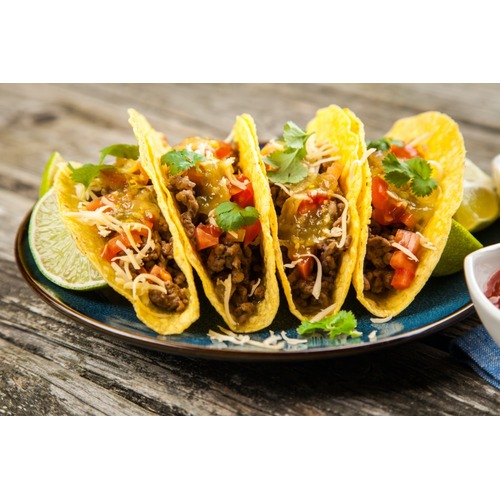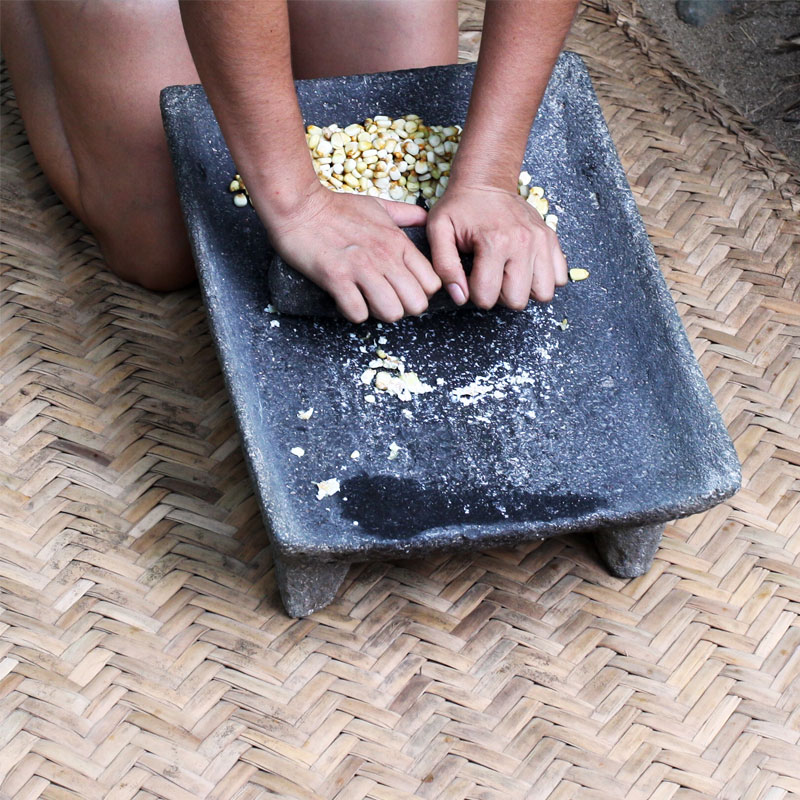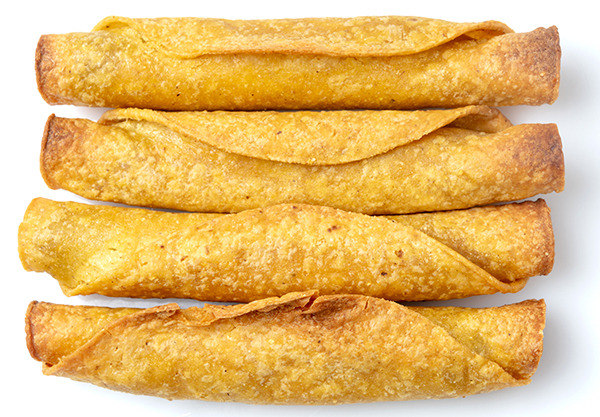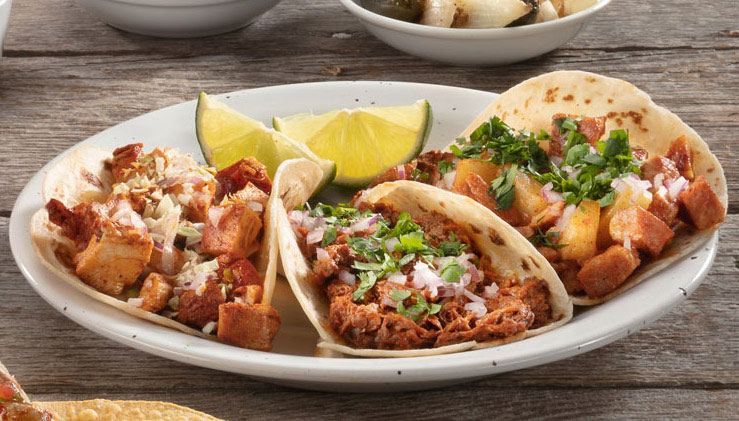Let’s Cook Now!
You should put this on your list of favorites if you enjoy tacos. You may have never had a better handmade beef taco than a suadero.

NGREDIENTS:
Confit Suadero:
- 2 lbs (907g) Suadero meat
- 1 teaspoon (4g) smoked paprika
- 1/2 teaspoon (2g) ground cumin
- 1/2 teaspoon (under 1g) cinnamon
- 1 teaspoon (4g) granulated sugar
- 1 tablespoon (10g) kosher salt
- 1 heads worth of garlic cloves
- 3 Serrano chilies, cut in half
- 1.5 quart (1.35kg) beef fat
- 1.5 quart (1.25kg) pork fat
- 5 bay leaves
- 1 heads worth of garlic cloves
Salsa Negra:
- 2 shallots, thinly sliced
- 1 cup (240ml) vegetable oil
- 1 ounce (28g) guajillo chili
- 1/2 ounce (14g) chili de Arbol
- 2 ancho chili-seeded
- 12 black garlic cloves
- 2 teaspoons (12g) fine sea salt
- 2 tablespoons (20g) light brown sugar
- 1/2 teaspoon (under 1g) ground cinnamon
- 1.5 teaspoon (6g) ground cumin
- 1.5 tablespoon (21g) white distilled vinegar
- 8 garlic cloves
- Smoked Flakey Salt to taste
Basic Guac & Topping:
- Salsa Negra
- 2 ripe avocados
- 2 teaspoons (12g) fine sea salt
- 1.5 tablespoons (23g) lime juice
- 1/2 sweet onion brunoise
- 1 Serrano chili, fine diced
- Fresh cilantro for garnish
- 1 bag chicharrones as garnish
INSTRUCTIONS:
Confit Suadero:
- Pre-heat oven at 225-250 F.
- In a small-size bowl, whisk paprika, cumin, sugar, and salt until combined. Optionally you can lightly score the fat on the “suadero”; season it with all your cure and let it sit covered in your fridge overnight.
- In a deep baking dish or a heavy bottom pot, place garlic (broken down into individual pieces) serranos and bay leaves; pat dries your suadero with a paper towel and place on top, then pour your melted beef and pork fat. The suadero meat should be entirely submerged, and if it is not, you can use a heat-proof weight.
- Cover with aluminum foil and place in the oven for 3 hours or until the meat is tender.
- Pull the meat out and shred as finely as you can and then chop it even finer with a clever or a knife; add it to a bowl, add a touch of your confit fat, cover it with plastic wrap and keep warm.
Salsa Negra:
- In a medium-size pan, add shallots vegetable oil; heat that over medium heat; once it starts to sizzle, begin constantly steering until they turn golden brown and the bubbling begins to subside, then immediately remove the shallots, and let the oil cool slightly.
- Then add guajillo peppers, arbol, and ancho chilis, let those cook over medium heat, often steering until starting to brown. Then add black garlic, salt, light brown sugar, cinnamon, and cumin; toss to combine, add vinegar, and let it simmer over medium heat for one more minute.
- Add your mixture to a blender except for the oil, and blend until fine as possible; then add garlic, and blend again until smooth as possible.
- Then add all of your oil and blend at maximum speed until smooth as you can—season to taste and reserve.
Basic Guac & Topping:
- Guacamole.- In a molcajete or a bowl, place avocado and slightly mash them, then add salt, lime juice, cilantro, and serrano chili; mash and fold together until combined and adjust to taste with salt and lime juice as needed.
- Optionally toss your suadero meat with your salsa to taste.
- Heat a cast iron skillet over medium-high, add a tortilla, and heat for 15 to 30 seconds per side. Repeat with all of your tortillas and place in a tortilla warmer.
- Assembly – Place a generous amount of meat on your tortilla, arrange it nicely, followed by a dollop spoon of your guacamole. Garnish with diced onion, crushed “chicharron,” and fresh cilantro.

Tacos are a food known all over the world – and not just on Tuesdays. Since they are a regular component of so many restaurant and family dinner menus, it’s no surprise that tacos come in all shapes, sizes, and culinary fusions. In fact, it is estimated that Americans alone consume 4.5 billion of them every year.
People assume they know the origins of this hand-held delicacy and tout their favorite local joint’s tacos as “the most authentic.” Unfortunately, many people don’t realize the tacos they are eating today won’t “fold up” to the originals. So, what is original? Historians today speculate on when tacos truly originated and how they developed into the cross-cultural food we know and love.
As we embark on this journey through the history of the taco, we hope you will develop a new appreciation for this international comfort food. Let’s answer the burning question: “Are tacos Mexican?”
WHERE DO TACOS COME FROM?
Tracing the origins of tacos is a complex undertaking because the taco itself has two primary components: a tortilla and the delicious fillings inside. The origins of the taco and the tortilla are interconnected but slightly different
THE TORTILLA
There is a widely held belief that tortillas originated in 3000 BC with the emergence of corn in the Americas. The people of the time, particularly in the area now known as Mexico, believed corn was quite significant and relied on it to improve their quality of life. In fact, many believed it kept them physically alive.
Scientists have discovered evidence that around 1500 BC, corn was ground into a fine powder similar to flour which could then be used to create a flatbread-style food. This may have been the first tortilla.

These flatbreads were then used as a vessel to scoop other foods to prevent burns from the heat transferred from hot stones or other cooking vessels.
THE TACO
While tortillas have long been used to hold a variety of food items, the origins of tacos as we know them today likely began in 18th-century Mexican silver mines. The term “taco” was used to describe a component of the explosive charges used to extract the ore. Specifically, the taco was the paper that was wrapped around the gunpowder so it could be inserted into the holes that were carved into the rocks.
The first reference to tacos in any dictionary came in the 19th century and referred to “tacos de minero,” or miner’s tacos, which leads many scholars to the conclusion that the mines were, in fact, the original source of the modern taco. Mines are also believed to be the source of other taco-like foods. Consider the taquito, which is essentially a rolled taco; it can be easy to understand the connection to the mining community due to its close resemblance to a stick of dynamite.

As the taco’s popularity grew among miners, news of the dish began to spread throughout the working class. Tacos soon became an easy commodity for women to sell in Mexico City. Because the city was a place where people gathered from all over Mexico, vendors combined their own regional foods with hand-held tortillas.
This led the area to become Mexico’s taco mecca, and eventually, people would return to their own towns and cities to create their own versions of the taco. By 1908, Cuautla became the first city on record to advertise tacos containing sausage, chorizo, pork rinds, mole Verde, and many other ingredients. These would eventually evolve into the familiar taco varieties of today.
TACOS IN THE USA
The reason the Cuautla-style tacos are so familiar to us today is that the early 1900s were a time when Mexican people were regularly traveling to work in the United States. The men would come to work jobs such as miners and railroad workers and bring their families with them. Often, their wives would push carts in the streets of Texas cities like Galveston, Houston, and San Antonio, selling Mexican foods like chili con carne and tacos. These women came to be known as Chili Queens, and they often get the credit for the invention of Tex-Mex cuisine.
The invention of Tex-Mex inevitably leads us to the mainstream tacos you likely know from some of the big chains across the country. As Mexican families in the US began eating more diverse foods, many people still added a Mexican flair. They would use what was regionally available, including ingredients like ground beef, lettuce, tomato, and cheese. While these tacos differ from the authentic style served in Cuautla, they are a chief reason tacos are so popular today.
WHAT IS A REAL MEXICAN TACO?
As you can see, many tacos eaten today are not classified as authentic Mexican food but rather Tex-Mex. Authentic tacos can be difficult to find in the US, although there is a recent resurgence of authentic meats and toppings, especially in street tacos. Still, in many areas, there are a select few restaurants serving truly authentic tacos.

Authentic tacos can also be tricky to achieve at home. Many of the prepackaged seasoning packets you can find at the grocery store give you a flavor that you may associate with Mexico, but the reality is that these, too, are an Americanized approximation. Many of the Mexican spices used to create authentic flavors are derived from peppers that aren’t grown in the United States. That means most of what we consider tacos in the US are someone’s best attempt at recreating this tasty treat.
